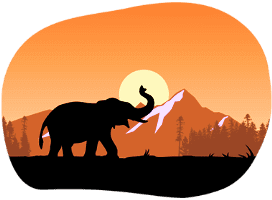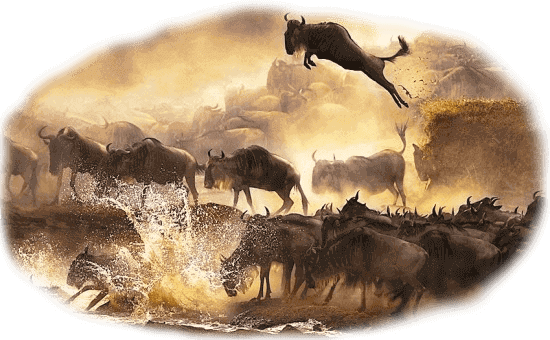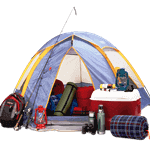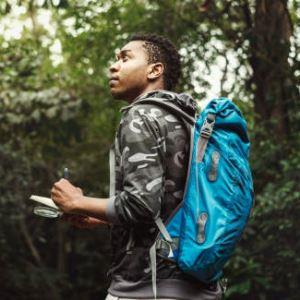 Kenya remains one of Africa’s most iconic safari destinations, and its rich landscapes, wildlife diversity, and welcoming culture attract visitors from around the globe. For Indian tourists, the allure lies not only in the chance to witness the Big Five or explore the Great Rift Valley but in experiencing it all in a way that respects their culinary preferences, cultural expectations, and language needs. A good safari package addresses these unique considerations without compromise. Tour operators offer curated Kenya safari tour packages specifically designed for Indian travelers. These packages feature Hindi-speaking guides who bridge language gaps and enhance storytelling during game drives. They also understand Indian customs and help travelers feel at home while exploring unfamiliar terrain. These guides ensure guests understand wildlife behavior, local customs, and safety tips in a language they are fluent in, creating a more immersive and relaxed experience. The itineraries for these tours usually include top safari destinations like Masai Mara, Amboseli, and Lake Nakuru. Each offers distinctive encounters, from lions on the hunt to elephants grazing beneath Mount Kilimanjaro. For Indian families or first-time safari-goers, shorter, more flexible schedules allow time to rest, engage in cultural visits, and enjoy Indian meals prepared on-site. Meals are tailored to dietary needs such as vegetarian and Jain preferences an important factor for many Indian travelers. Moreover, these Kenya safari tour packages balance comfort and cost. With options ranging from budget-friendly group tours to luxury private safaris, travelers can choose based on personal style and financial plan. Mid-range lodges and tented camps offer great value and provide essential amenities without inflating the budget. Often included are airport transfers, park entrance fees, daily safaris, and accommodation with Indian or English-speaking hosts. Booking a safari as an Indian traveler no longer requires compromising on cultural comfort. With customized plans that include Indian cuisine, Hindi-speaking assistance, and itineraries adapted to family needs, the Kenya safari becomes more than a wildlife adventure it transforms into a culturally familiar journey across one of the world’s most stunning natural stages. These packages are designed with care, combining wildlife thrills with the warmth and attention that Indian guests appreciate. As a result, a safari in Kenya becomes not only unforgettable but also deeply personal.
Kenya remains one of Africa’s most iconic safari destinations, and its rich landscapes, wildlife diversity, and welcoming culture attract visitors from around the globe. For Indian tourists, the allure lies not only in the chance to witness the Big Five or explore the Great Rift Valley but in experiencing it all in a way that respects their culinary preferences, cultural expectations, and language needs. A good safari package addresses these unique considerations without compromise. Tour operators offer curated Kenya safari tour packages specifically designed for Indian travelers. These packages feature Hindi-speaking guides who bridge language gaps and enhance storytelling during game drives. They also understand Indian customs and help travelers feel at home while exploring unfamiliar terrain. These guides ensure guests understand wildlife behavior, local customs, and safety tips in a language they are fluent in, creating a more immersive and relaxed experience. The itineraries for these tours usually include top safari destinations like Masai Mara, Amboseli, and Lake Nakuru. Each offers distinctive encounters, from lions on the hunt to elephants grazing beneath Mount Kilimanjaro. For Indian families or first-time safari-goers, shorter, more flexible schedules allow time to rest, engage in cultural visits, and enjoy Indian meals prepared on-site. Meals are tailored to dietary needs such as vegetarian and Jain preferences an important factor for many Indian travelers. Moreover, these Kenya safari tour packages balance comfort and cost. With options ranging from budget-friendly group tours to luxury private safaris, travelers can choose based on personal style and financial plan. Mid-range lodges and tented camps offer great value and provide essential amenities without inflating the budget. Often included are airport transfers, park entrance fees, daily safaris, and accommodation with Indian or English-speaking hosts. Booking a safari as an Indian traveler no longer requires compromising on cultural comfort. With customized plans that include Indian cuisine, Hindi-speaking assistance, and itineraries adapted to family needs, the Kenya safari becomes more than a wildlife adventure it transforms into a culturally familiar journey across one of the world’s most stunning natural stages. These packages are designed with care, combining wildlife thrills with the warmth and attention that Indian guests appreciate. As a result, a safari in Kenya becomes not only unforgettable but also deeply personal.
Comprehensive Kenya Safari Planning Guide for Indian Tourists
| Feature | Details |
|---|---|
| Duration Options | 3, 5, 7, or 10 days |
| Best Time to Visit | June to October, January to February |
| Top Parks for Big Five | Masai Mara, Amboseli, Lake Nakuru |
| Available Indian Cuisine | Vegetarian, Jain, North/South Indian |
| Languages Offered | Hindi, Gujarati, English |
| Accommodation Types | Tented camps, mid-range lodges, luxury resorts |
| Family Customization Options | Kids’ activities, elderly care, family suites |
| Included in Budget Packages | Park fees, meals, transport, Hindi-speaking guide |
| Pre-Travel Consultation Services | Visa support, vaccine info, travel insurance setup |
| Add-on Experiences | Hot air balloon safari, Maasai village visit, Lake Naivasha boat ride |
Kenya Safari with Hindi-Speaking Guides for Indians
For many Indian tourists, a safari in Kenya is a once-in-a-lifetime experience, and having a Hindi-speaking guide can elevate that experience from great to extraordinary. These guides serve as cultural bridges, making the journey smoother, more informative, and emotionally fulfilling. They not only translate but also interpret, bringing Kenyan wildlife, landscapes, and traditions to life in a language that feels like home. Hindi-speaking guides understand the rhythms and expectations of Indian travelers. From how people prefer to interact in group settings to how much time they like to spend at each site, these guides anticipate needs. During game drives, they can explain animal behaviors, local legends, and park rules in Hindi, making complex ideas instantly accessible. For families with elderly members or children, this kind of linguistic clarity provides reassurance and ease. The value of having a Hindi-speaking guide also extends beyond safari vehicles. Whether helping guests navigate lodge check-ins, negotiate local markets, or understand cultural practices during village visits, these guides offer insight and support that goes beyond a simple language function. They become cultural companions. This is particularly helpful in settings where gestures and customs differ sharply from Indian norms. Hindi-speaking guides often come with experience serving Indian groups and understand the emotional and culinary expectations that accompany such trips. They can communicate dietary needs to chefs, advise on shopping choices, or suggest customized experiences like prayer spaces or vegetarian meal options. Their presence ensures that Indian tourists don’t feel like outsiders in an unfamiliar land. The emphasis is on authentic and accessible safari experiences. Partnering with Hindi-speaking naturalists, the company ensures each traveler is not just a visitor but a participant in Kenya's vibrant natural world. These guides have deep knowledge of wildlife behavior and park geography, so every game drive becomes an opportunity for rich, story-driven learning. A safari with Hindi-speaking guides transforms a typical tour into a warm, personalized journey. It connects travelers not just to the environment around them, but to the heart of Kenya through familiar language and cultural alignment. With this thoughtful support, Indian tourists can truly immerse themselves in the beauty, thrill, and wonder of the African wild, feeling both safe and understood throughout the experience.
The Best Time to Book Kenya Safari for Indian Tourists
Timing is one of the most important decisions when planning a Kenya safari, especially for Indian tourists who want to maximize wildlife sightings, enjoy favorable weather, and align with family or school holidays. The best safari experience depends on understanding Kenya's climate and the rhythm of its natural wonders. Here are key considerations that help determine the ideal time to book a Kenya safari:
- June to October (Dry Season and Great Migration): This is the most popular time for Indian travelers to visit Kenya. The weather is dry and sunny, making it perfect for game drives. Vegetation is sparse, so animals are easier to spot, especially around water sources. The highlight during this season is the Great Wildebeest Migration in Masai Mara, typically between July and September, offering dramatic river crossings and predator action.
- January to February (Short Dry Season): This brief dry spell is another good time for safaris. The weather is warm and dry, and animals are active. For Indian tourists seeking less crowded parks and favorable photography conditions, this season is a top pick. It also aligns well with winter holidays in India.
- March to May (Long Rain Season): These months bring heavy rains, making some roads impassable and animal sightings less predictable. However, for budget-conscious Indian travelers, this off-peak season often offers discounted packages and fewer tourists. Some parks, like Amboseli, still provide excellent sightings during breaks in the rain.
- Indian School and Festival Holidays: Consider syncing your trip with long breaks like the summer vacation in May-June or Diwali holidays in October-November. While June to October is ideal, early booking is crucial during these peak windows to secure the best rates and accommodations.
- Advance Booking Benefits: Booking a safari 4-6 months in advance gives Indian tourists a wider choice of hotels, better rates, and access to experienced Hindi-speaking guides. Early reservations are especially important during the Migration season, when demand is high.
By aligning travel dates with wildlife seasons, cultural calendars, and personal preferences, Indian tourists can enjoy a richer, smoother, and more fulfilling safari in Kenya. A well-timed safari ensures unforgettable memories and avoids unnecessary travel hiccups.
Budget Kenya Safari with Indian Cuisine and Guide
A Kenya safari doesn't have to be an expensive luxury. For Indian tourists looking to explore Africa's wild beauty while keeping an eye on cost, a well-planned budget safari can deliver an authentic experience without sacrificing comfort. One of the most popular requests from Indian travelers is the inclusion of familiar food and culturally sensitive services. Budget safari packages are designed to provide the core experiences of Kenyan wildlife tourism visiting iconic national parks, encountering the Big Five, and exploring savannah landscapes while controlling expenses. These packages often use quality mid-range lodges or tented camps that offer essential amenities without frills. Shared game drives, fixed itineraries, and scheduled transport reduce costs while maintaining the adventure. What truly makes these packages special for Indian travelers is the integration of Indian cuisine and culturally fluent guides. Many travelers are concerned about dietary restrictions and the availability of vegetarian or Jain food during a safari. A number of partner lodges and camps now offer Indian meals prepared by chefs familiar with regional tastes. Whether it's hot chapatis at breakfast or a comforting dal chawal dinner after a day of game drives, the familiar food helps travelers feel at home even in the African wilderness. Equally important is the presence of Hindi-speaking guides who understand Indian customs and can communicate effectively. These guides help with everything from explaining animal behavior to managing logistics at check-ins or park entries. For families with older members or children, a guide who speaks their language adds not only clarity but emotional ease. It also allows travelers to ask questions freely, engage more deeply with the environment, and understand cultural elements of Kenya without language barriers. These budget safaris typically include airport pickup and drop-off, park entrance fees, accommodation, daily game drives, and full-board meals. Optional experiences such as Maasai village visits, Lake Naivasha boat rides, or even hot-air balloon safaris can be added to fit preferences and budget. For Indian tourists, especially first-time safari-goers, these thoughtfully assembled budget packages offer the perfect blend of adventure, culture, and cost efficiency. The result is a safari that is not only affordable but also deeply enriching and culturally comfortable. You don't have to spend a fortune to create lifelong memories in Kenya you just need the right plan.
Get Customized Kenya Safari Tours for Indian Families
Every family is different, and that holds especially true when planning a safari experience across generations. Indian families, often traveling with children, elders, and extended relatives, benefit immensely from a Kenya safari itinerary tailored to their specific needs. Customized safari tours for Indian families ensure comfort, cultural familiarity, and meaningful engagement with Kenya’s diverse landscapes and wildlife. Unlike rigid group packages, a customized safari puts your preferences first. The journey can be adapted to include shorter game drives, midday rests, or cultural excursions suited for children and elderly family members. Many Indian families opt for a balance between thrilling wildlife experiences and relaxed downtime. With a private vehicle and guide, you can control the pace of your travel and decide where and when to stop. One of the major advantages of customizing your tour is the ability to incorporate dietary requirements without hassle. Indian cuisine including vegetarian, Jain, and even regional preferences from North or South India can be arranged at selected lodges and camps. This level of detail ensures meals feel like home, making it easier for children and elders to adjust. Accommodation is another area where personalization makes a big difference. Family suites, interconnecting rooms, or large tents with private bathrooms are available in both mid-range and luxury camps. Accessibility features for seniors and activity options for kids, like junior ranger programs or cultural dance evenings, enhance everyone’s experience. With guidance from Hindi-speaking tour experts, the family gains deeper understanding and emotional ease. These professionals can explain Kenya’s ecosystems, interpret animal behaviors, and narrate stories about local tribes and customs all in a language your family understands. This makes the trip educational and emotionally enriching. Safety is also central to customized safaris. Routes are carefully chosen to minimize long hours on the road, and your guide remains focused on your group's comfort and preferences throughout the trip. Emergency support, medical access, and travel insurance guidance are typically built into the planning phase. We take the time to understand the makeup of each family, from young kids to grandparents, and design a safari that fits everyone’s pace and interest. From arranging birthday surprises in the wild to scheduling spiritual visits in Nairobi, every detail can be curated. A customized Kenya safari is more than a trip it's a shared memory in the making. With thoughtful planning and cultural sensitivity, Indian families can enjoy the beauty of Kenya in a way that feels both adventurous and deeply personal.
Experience the Best Kenya Big Five Safari Tours for Indians
 For Indian tourists, spotting Africa's legendary "Big Five" lion, leopard, elephant, buffalo, and rhinoceros is often the pinnacle of a Kenya safari. These majestic animals are not only a symbol of African wildlife but also a measure of a safari's success. The best Big Five tours are crafted to maximize sightings in a natural and respectful way, while ensuring the experience is culturally accessible and emotionally rewarding for Indian travelers. Kenya is home to several parks and conservancies where the Big Five roam freely. The Masai Mara National Reserve remains the most iconic, especially during the Great Wildebeest Migration between July and September. Here, lions and leopards can often be seen trailing massive herds of antelope and zebra. Lake Nakuru is particularly known for its dense population of rhinos, both black and white, offering rare photography opportunities. Amboseli National Park, with Mount Kilimanjaro as a backdrop, provides some of the best elephant viewing in all of Africa. To make the most of these opportunities, experienced guides including Hindi-speaking ones play a vital role. They understand animal behavior, track wildlife effectively, and communicate the significance of sightings in a way Indian tourists can deeply appreciate. For many visitors, listening to a lion’s roar at dusk or watching a leopard resting in an acacia tree becomes even more impactful when shared through familiar language and cultural understanding. These tours often combine early morning and late afternoon game drives, when animal activity is at its peak. Vehicles used in the Big Five circuits are generally 4x4 and open-roofed, designed for unobstructed views and photography. Tour packages may be customized for private groups, couples, or families, ensuring each safari caters to comfort levels and specific interests. What sets the best Big Five tours apart for Indian travelers is the cultural sensitivity woven into the entire experience. Meals can be tailored to Indian preferences, with vegetarian and Jain food available at many lodges. Game drives can be paced gently to suit multi-generational families, and optional rest days or village visits can be added to enrich the itinerary. By choosing a safari that combines expert guidance, wildlife expertise, and cultural personalization, Indian tourists can enjoy a truly world-class Big Five experience in Kenya. It is not just about seeing the animals; it’s about understanding their role in the ecosystem, respecting their space, and creating memories that remain vivid long after the journey ends.
For Indian tourists, spotting Africa's legendary "Big Five" lion, leopard, elephant, buffalo, and rhinoceros is often the pinnacle of a Kenya safari. These majestic animals are not only a symbol of African wildlife but also a measure of a safari's success. The best Big Five tours are crafted to maximize sightings in a natural and respectful way, while ensuring the experience is culturally accessible and emotionally rewarding for Indian travelers. Kenya is home to several parks and conservancies where the Big Five roam freely. The Masai Mara National Reserve remains the most iconic, especially during the Great Wildebeest Migration between July and September. Here, lions and leopards can often be seen trailing massive herds of antelope and zebra. Lake Nakuru is particularly known for its dense population of rhinos, both black and white, offering rare photography opportunities. Amboseli National Park, with Mount Kilimanjaro as a backdrop, provides some of the best elephant viewing in all of Africa. To make the most of these opportunities, experienced guides including Hindi-speaking ones play a vital role. They understand animal behavior, track wildlife effectively, and communicate the significance of sightings in a way Indian tourists can deeply appreciate. For many visitors, listening to a lion’s roar at dusk or watching a leopard resting in an acacia tree becomes even more impactful when shared through familiar language and cultural understanding. These tours often combine early morning and late afternoon game drives, when animal activity is at its peak. Vehicles used in the Big Five circuits are generally 4x4 and open-roofed, designed for unobstructed views and photography. Tour packages may be customized for private groups, couples, or families, ensuring each safari caters to comfort levels and specific interests. What sets the best Big Five tours apart for Indian travelers is the cultural sensitivity woven into the entire experience. Meals can be tailored to Indian preferences, with vegetarian and Jain food available at many lodges. Game drives can be paced gently to suit multi-generational families, and optional rest days or village visits can be added to enrich the itinerary. By choosing a safari that combines expert guidance, wildlife expertise, and cultural personalization, Indian tourists can enjoy a truly world-class Big Five experience in Kenya. It is not just about seeing the animals; it’s about understanding their role in the ecosystem, respecting their space, and creating memories that remain vivid long after the journey ends.
What to Pack for Kenya Safari Tours from India
Packing for a Kenya safari tour from India requires careful planning to ensure comfort, safety, and a smooth experience. Kenya’s weather, terrain, and cultural settings are different from what most Indian travelers may be used to, so a well-prepared packing list can make a world of difference. Below is a detailed guide to the essential items Indian tourists should include in their safari luggage:
- Clothing for Comfort and Climate: Pack lightweight, breathable clothing in neutral colors like khaki, beige, or olive green. These help blend into the surroundings and avoid attracting insects. Avoid camouflage or bright-colored clothes. Include long-sleeved shirts and pants for sun protection and to guard against mosquito bites during early morning and evening drives.
- Weather-Ready Layers: Mornings and nights can be chilly, especially in high-altitude parks like the Masai Mara. Bring a light jacket or fleece. A waterproof outer layer is advisable if you're traveling during the rainy season (March-May).
- Footwear: Carry a pair of sturdy, closed-toe walking shoes or hiking boots for bushwalks and uneven terrain. Flip-flops or sandals are good for lounging around lodges.
- Sun and Insect Protection: A wide-brimmed hat, high-SPF sunscreen, insect repellent, and UV-protection sunglasses are vital for outdoor exposure. Mosquito repellent with DEET or natural oils can help prevent bites.
- Health and Hygiene: Carry personal medications with prescriptions, a basic first aid kit, hand sanitizer, and wet wipes. Some regions may require malaria prophylaxis, so consult your doctor in advance.
- Tech Essentials: Kenya uses the British-type G plug, so carry a universal power adapter. Pack a portable power bank, camera with zoom lens for wildlife photography, and binoculars to view distant animals.
- Snacks and Special Diet Items: While Indian meals may be available, consider packing instant mixes (like poha or upma), snacks, tea bags, and spices if you have specific preferences. These come in handy during long drives or in remote areas.
- Travel Documents: Carry printed and digital copies of your passport, visa, travel insurance, flight tickets, and safari itinerary. A waterproof folder helps keep them safe.
Packing smart ensures that your focus stays on enjoying the beauty of Kenya rather than dealing with unexpected inconveniences. With the right essentials, Indian travelers can explore the wild comfortably, safely, and with peace of mind.






